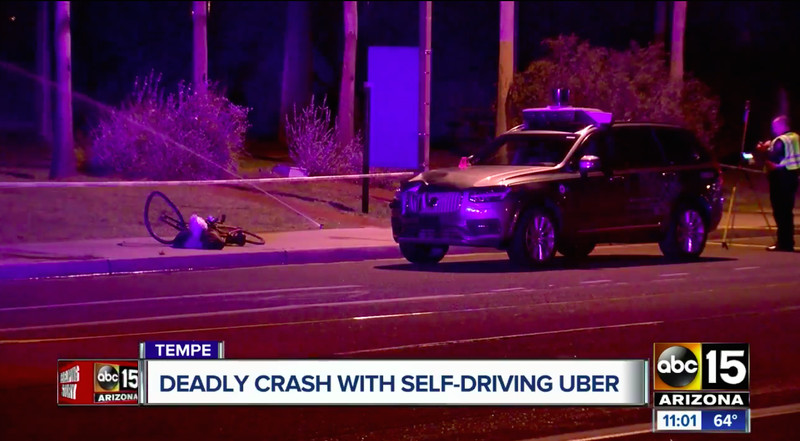An unfortunate but historic event occurred in Arizona on 19th March 2018 when a Self Driving Uber Car hit and killed a woman crossing the street in Arizona. (Refer Reuter article here).
 The pedestrian who lost her life was a 49 year old lady by name Elaine Herzberg. It appears that there were no passengers in the vehicle but a driver was behind the wheels though the car was under auto pilot mode. The vehicle is said to be going at a speed of 40mph at the time of the accident (Refer abcnews.com).
The pedestrian who lost her life was a 49 year old lady by name Elaine Herzberg. It appears that there were no passengers in the vehicle but a driver was behind the wheels though the car was under auto pilot mode. The vehicle is said to be going at a speed of 40mph at the time of the accident (Refer abcnews.com).
This may not the first accident of a driver less car but is considered as the first accident of such a car resulting in a fatality. Uber has rendered its apology (Refer guradian) and statistics are out to say that accidents do happen even in manually driven cars. It has also suspended operation of its autonomous cars across USA and sent a team to investigate the cause.
According to one statement, the driver could have technically over ridden the auto mode. This raises several legal issues on fixing of responsibility for the accident. Was it the inability of the manual driver behind the wheels that caused the accident? or Was it the AI driving the vehicle? If so, is Uber responsible for the accident? If Uber has bought the software from a software company, was it responsible for the accident?
There has to be a forensic investigation of what went wrong since there could be several independent components of the car such as navigation, brakes, the sensors etc which had to act in coordination and failure could have occurred in any of these parts. Functionality of each of these parts could be the responsibility of different companies who were sub contractors of Uber.
Will the current Cyber Laws be able to meet such requirements? is the first question that crosses our mind. In India an “Automated” activity is attributed to the person who “Caused” the system to behave automatically.
In this case, the Car behaved maliciously because the sensor failed to detect the obstacle and instruct the brake system and/or the brake system failed to react in time. The person who was responsible for the sensor, internal communication and brake systems as well as the aggregate owner namley Uber have direct and vicarious liabilities. Each will declare their “Due Diligence” and try to shift the blame to another. May be there will be need for Section 65B certificate of evidence countered by a Section 79A accredited Digital Evidence Examiner for a Court to consider the liability.
Whatever the law may say, if this accident had occurred in India the first attempt of any person who may be held responsible is to ensure that the evidence is tampered with. The Police as they do in the case of other cases where CCTV footage is seized will try to take control of the car with its internal data and the fate of the case would depend on whether they would faithfully preserve and produce the data to the Court. In all probability the politicians will try to intervene and ensure that the reputation of its favoured people is not damaged. They may some how prove that all the forensic data was corrupted and is not available or produce select data to prove that the person behind the driving wheel had the manual control at the time of the accident and was responsible for the accident and not the “Car Company”.
I am sure that Arizona Police will be more objective and try to scientifically analyze the causes for the accident and contribute to the development of the science behind the creation of driver less cars. In that context, we can consider this as an “Accident” and look at the statistics and proceed to learn from the accident and proceed.
But one important requirement in such cases is to ensure that the “Evidence” does not get destroyed or is left to the whims and fancies of one agency ..even the Police. Also in a more violent accident the physical damage to the vehicle can destroy the evidence also.
Hence there has to be a “Black Box” that is not tamperable capturing encrypted data which can be decrypted only by a reliable authority. Also good part of the data should be transferred in real time out of the control of the Car owner to a remote location to be opened only under judicial intervention.
Securing the evidence in such cases is very important for the development of secure driverless cars for the future.
Naavi
Also Read:
Self Driving Cars attacked in California
No Signs of slowing..says Police








Rather than bring amendments after the occurrence of an event resulting in overburdening the judicial machinery, it would advisable for you to also send this to IRDA with suggestions to amend the Indian Insurance laws as well as to the Ministry of Transport to bring in suitable amendments for registration of such vehicles.